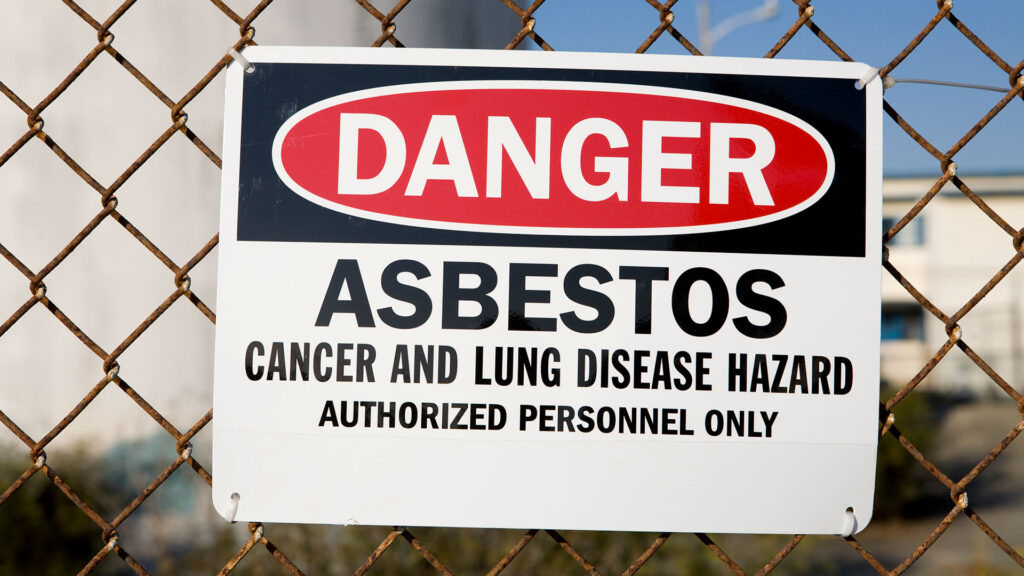It’s hard to believe that, despite decades of knowledge about its deadly risks, asbestos is still present in products today. Asbestos exposure can lead to devastating illnesses like mesothelioma and lung cancer, illnesses that often take years to develop but change lives in an instant.
Unfortunately, many individuals who come into contact with asbestos don’t even know they’ve been exposed until they are facing a serious diagnosis. While we would like to think that asbestos belongs to the past, the reality is more troubling. Products containing asbestos are still on the market, putting workers and consumers at risk.
For anyone facing a mesothelioma diagnosis or grappling with another serious asbestos disease, the pain of knowing that your illness was preventable is immeasurable. The fact that manufacturers have continued to use asbestos despite knowing its dangers is an outrage.
If you or a loved one is dealing with the aftermath of asbestos exposure, you deserve justice. Vogelzang Law’s asbestos injury lawyers can help you build a case and pursue a claim against the companies responsible.
A Brief History of Asbestos Use

Asbestos has been valued for its fire-resistant and insulating properties for centuries, with its use dating back to ancient civilizations. However, it wasn’t until the Industrial Revolution that asbestos became widely used in manufacturing, construction, and consumer products.
Asbestos was prized for its versatility, used in everything from shipbuilding to household goods. Its ability to resist heat and chemicals and its affordability made it seem like a miracle material. Little did the public know that behind these appealing qualities lay a deadly truth.
By the mid-20th century, scientific evidence linking asbestos exposure to serious illnesses, including mesothelioma, lung cancer, and asbestosis, was well-established.
However, many manufacturers ignored these warnings. Instead of eliminating asbestos from their products, they continued to use it, often without informing the public about the health risks. The result? Countless lives were lost to asbestos-related diseases.
Products That Still Contain Asbestos
Although regulations have reduced the widespread use of asbestos in the United States, it’s alarming to realize that it is still not fully banned. Specific products continue to legally contain asbestos, and older products made before regulations were put in place still pose risks.
Both workers and consumers may come into contact with asbestos without even knowing it, creating a persistent public health hazard. Some of the products that may still contain asbestos include:
Construction Materials
Asbestos was once widely used in construction materials for its fireproofing and insulation properties. While new construction projects largely avoid asbestos, older homes and buildings often contain asbestos-based products, including insulation, roofing shingles, ceiling tiles, and cement pipes. Disturbing these materials during renovations or repairs can release dangerous asbestos fibers into the air.
Automotive Parts
Due to its heat resistance, the automotive industry used asbestos in brake pads, clutch plates, and gaskets. Although many manufacturers have transitioned away from asbestos, older vehicles still on the road may contain asbestos components, putting mechanics and drivers at risk if those parts are disturbed.
Electrical Equipment
Asbestos was commonly used in electrical insulation for its non-conductive properties. Older electrical panels, wiring insulation, and fuse boxes may contain asbestos, which can pose a risk when electricians or contractors work on these systems.
Textiles and Fireproof Clothing
Asbestos was used to produce fireproof clothing and industrial protective gear. While these products are no longer made with asbestos, older versions may still be in circulation in industrial settings.
Consumer Goods
Shockingly, some consumer goods have also contained asbestos, particularly older household appliances like hair dryers and popcorn makers. In addition, asbestos has been found in certain talc-based cosmetics, which raises concerns about how much the public still faces exposure from everyday products.
While asbestos isn’t found in most new consumer products, its legacy remains a threat, especially in older items that may still be used today.
How Asbestos Exposure Happens

Asbestos exposure can occur in a variety of ways, but what all forms of exposure have in common is that they put individuals at serious risk of illness. The outcome can be deadly whether you’re a construction worker tearing out asbestos-laden insulation or a homeowner unwittingly breathing in fibers from old ceiling tiles.
The most common way asbestos exposure occurs is through inhalation. When asbestos-containing materials are disturbed, they release tiny, needle-like fibers into the air.
These fibers can remain airborne for a long time and are easily inhaled. Once inhaled, they become lodged in the lungs, where they cause inflammation and scarring, potentially leading to diseases like mesothelioma and lung cancer.
In some cases, people may also be exposed to asbestos through ingestion. This can happen if asbestos fibers contaminate food or water, especially in workplaces with asbestos dust. Although less common, skin contact with asbestos-containing materials can also lead to exposure, especially if proper protective gear is not worn.
The Risks of Asbestos Exposure
The health risks associated with asbestos are well-documented and severe. Mesothelioma is perhaps the most well-known asbestos-related disease, but it is not the only one. Asbestos exposure can lead to a range of serious illnesses, including:
- Mesothelioma: A rare but aggressive cancer that affects the lining of the lungs, abdomen, or heart. Mesothelioma has a long latency period, often taking decades to develop after exposure. By the time symptoms appear, the disease is usually advanced and difficult to treat.
- Lung Cancer: Asbestos exposure significantly increases the risk of developing lung cancer. Smokers who are exposed to asbestos are at even higher risk.
- Asbestosis: A chronic lung condition caused by the scarring of lung tissue due to asbestos fibers. Asbestosis can lead to severe respiratory issues and significantly decrease a person’s quality of life.
- Pleural Thickening: This non-cancerous condition involves the thickening and stiffening of the lung lining, which can make breathing difficult and lead to chronic chest pain.
- Pleural Effusion: Fluid buildup in the space between the lungs and the chest wall, causing chest pain and shortness of breath.
The symptoms of asbestos-related diseases often take years to manifest, which means that many people don’t realize they’ve been exposed until it’s too late. This delayed onset makes asbestos exposure especially insidious.
Manufacturers Knew the Risks—But They Didn’t Stop
One of the most tragic aspects of asbestos-related illnesses is that many of them could have been prevented. Manufacturers knew about the risks of asbestos long before regulations were put in place. Instead of prioritizing public health, many companies continued to use asbestos because it was cheap and effective, even though it was a ticking time bomb for those exposed.
These companies chose profits over people, allowing countless workers and consumers to be exposed to a deadly substance. Even today, the fact that asbestos is still legally allowed in some products is a glaring reminder of the failure to fully protect the public from this danger. The harm done by these manufacturers is unacceptable, and they must be held accountable.
What Can You Do if You’ve Been Exposed?
If you or a loved one has been diagnosed with mesothelioma or another asbestos-related illness, you don’t have to go through it alone. The law recognizes the injustice of asbestos exposure, and legal avenues are available to hold responsible parties accountable.
A mesothelioma diagnosis is devastating, but seeking justice can provide financial support for medical treatment, lost wages, and emotional suffering. Vogelzang Law’s asbestos injury attorneys and mesothelioma lawyers are dedicated to helping victims of asbestos exposure build strong cases against the companies that knowingly put them at risk.
These cases can be complex, but our firm is equipped to handle them. Whether in Chicago or elsewhere in the United States, Vogelzang Law can help. The firm handles cases nationwide, considering the laws of each state to ensure you get the compensation you deserve.
The Fight Against Asbestos Continues: Let Vogelzang Law Fight for You
As long as asbestos remains in products, the public will continue to be at risk. While significant progress has been made to limit asbestos use, the fight is far from over. Manufacturers who prioritize profit over people must be held accountable, and those who suffer from asbestos-related illnesses deserve justice.
Vogelzang Law can help you navigate the legal process and pursue a claim if you or a loved one has been affected by asbestos exposure. Our legal team understands the emotional and physical toll of mesothelioma and other asbestos-related diseases.
We are committed to fighting for the compensation you deserve. Call our main office in Chicago at 312-466-1669 or contact us online nationwide.



